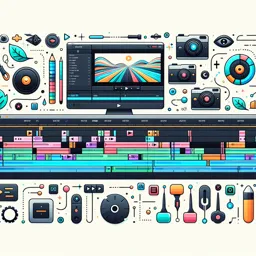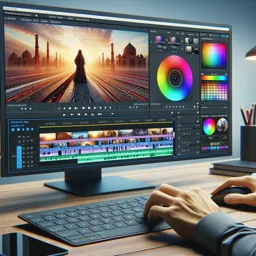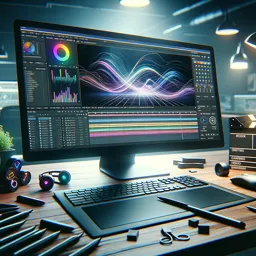Adobe Premiere Pro is a powerful video editing tool, widely used by professionals and hobbyists alike. However, due to its extensive range of features and resource-intensive nature, it’s not uncommon for users to experience performance issues during the editing process. Slow playback, lags, and crashes can disrupt the workflow and reduce efficiency. To ensure a smooth editing experience, it’s essential to optimize both your hardware and Premiere’s settings. In this article, we’ll explore performance tips and best practices to make Adobe Premiere run as efficiently as possible.
1. Upgrade Your Hardware: Focus on Key Components
Adobe Premiere relies heavily on a few specific hardware components, and upgrading these can significantly boost performance:
- CPU: Premiere utilizes multi-core processors for faster rendering and playback. Opt for a CPU with at least 6 cores, but more is better if budget allows.
- RAM: Aim for a minimum of 16GB of RAM for standard HD editing, but 32GB or more is recommended for 4K or higher resolutions.
- GPU: A dedicated graphics card is crucial for handling effects and smooth playback. Look for a high-end NVIDIA or AMD GPU with at least 4GB of VRAM.
- Storage: Use SSDs for both your operating system and media files. SSDs are significantly faster than HDDs, reducing loading times and improving responsiveness.
2. Optimize Adobe Premiere’s Settings for Better Performance
Premiere Pro’s settings can greatly impact its speed and efficiency. Here’s how to optimize them:
- Enable GPU Acceleration: Go to File > Project Settings > General, and set the Renderer to Mercury Playback Engine GPU Acceleration. This offloads some processing tasks to your GPU, improving playback and rendering speeds.
- Adjust Playback Resolution: Lower the playback resolution to 1/2 or 1/4 for smoother previews. This doesn’t affect the final output quality but can make editing faster.
- Set a Dedicated Media Cache Location: Under Preferences > Media Cache, choose a separate SSD for the media cache to speed up rendering and preview generation.
- Optimize Memory Usage: In Preferences > Memory, set Premiere to prioritize memory for other Adobe applications, especially if you’re using After Effects or Photoshop simultaneously.
3. Manage Media Files Efficiently
Large and unorganized media files can slow down your project. Follow these best practices:
- Use Proxies for High-Resolution Footage: Editing 4K or 8K footage directly can be taxing. Create proxies, which are lower-resolution versions of your footage, for a smoother editing experience. This can be done by right-clicking your media files and choosing Proxy > Create Proxies.
- Consolidate and Transcode Files: Before starting a project, consider transcoding all your media into a consistent format using tools like Adobe Media Encoder. This reduces strain on Premiere when handling various file types.
- Organize Media into Bins: Proper organization in the project panel helps Premiere locate files more efficiently, reducing load times when working with large projects.
4. Optimize Your Workflow
The way you work within Premiere also affects performance. Implement these tips for a smoother editing experience:
- Use Nested Sequences: If you’re applying heavy effects or complex edits, nest sections of your timeline into separate sequences. This isolates intensive tasks and makes the timeline more responsive.
- Avoid Excessive Effects on Raw Footage: Apply color grading and effects to a copy of the footage, not the raw media. Alternatively, pre-render sections of your timeline with intensive effects by using Sequence > Render In to Out.
- Utilize the Media Encoder for Exports: Instead of exporting directly in Premiere, send your project to Adobe Media Encoder. This allows you to continue editing in Premiere while the export is processed.
5. Regular Maintenance and Project Management
Keeping your system clean and well-maintained is crucial for long-term performance:
- Clean Up the Media Cache Regularly: Media cache files can build up over time and slow down your system. Go to Preferences > Media Cache, and clear unused media cache files regularly.
- Keep Premiere Updated: Adobe releases updates that often include performance improvements and bug fixes. Ensure that Premiere and your GPU drivers are always up to date.
- Archive Completed Projects: Large, completed projects can clutter up your system. Move them to external storage to free up space for new projects.
Conclusion
Optimizing Adobe Premiere Pro is essential for a smooth and efficient editing experience. By upgrading key hardware components, adjusting Premiere’s settings, and managing your media files effectively, you can significantly enhance its performance. Whether you’re working on small projects or large-scale productions, these tips will help you maintain a streamlined workflow, minimize lags, and produce high-quality videos more efficiently.
































